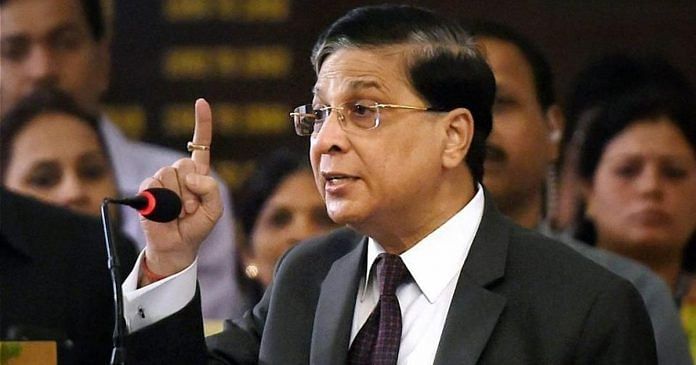Given the enormous political implications of their opinions, it is important judges make it easy for citizens to understand court rulings.
The Supreme Court ruling Wednesday on the role and powers of Delhi’s Lieutenant Governor throws up an unusual and interesting question.
Why do judges write separate opinions even when they pretty much agree with each other?
The unanimous ruling had three opinions among five judges of the bench. Justices A.K. Sikri and A.M. Khanwilkar agreed with Chief Justice Dipak Misra’s reasons to arrive at this conclusion, while justices D.Y. Chandrachud and Ashok Bhushan gave their own reasons in separate, concurring opinions.
A concurring opinion is given when one agrees with the conclusions but arrives at them for different reasons.
Concurring opinions are important because a plurality of views is always a good thing.
Indian judges are anyway known for agreeing with each other a bit too much and staying away from voicing dissent. But what is more troubling is that even when they agree, they do not critically engage with the views of their colleagues.
For an ordinary citizen to read these judgments that greatly affect them, it is tiresome to go through hundreds (in some cases thousands) of pages of similar views. Those who read the Delhi judgment would agree that the three opinions had many repetitions. Justice Bhushan even said he “substantially agreed” with his brother judges but still wrote 123 pages explaining his position.
Justice Chandrachud also says this. “After the circulation of my judgment to my learned colleagues, I have had the benefit of receiving the judgments of the learned Chief Justice and brother Justice Ashok Bhushan. I believe that there is a broad coalescence of our views,” he wrote in the penultimate paragraph.
He too agrees that their views are similar but quietly points out he was the first one to write the opinion. The four other judges had the opportunity to read what he wrote and then, instead of simply noting disagreements, wrote extra 350-odd pages.
American scholars, including Ruth Bader Ginsburg, a serving judge of the Supreme Court of the US, are critical of this practice of writing concurring opinions. It is seen as robbing the court of a strong, majority voice. It becomes difficult to cull out the precise law from the cacophony of voices even when they all seem to be saying the same thing.
Take the landmark privacy case, for example. While all nine judges unanimously agreed that privacy is a fundamental right, there were six separate but concurring opinions. Each one of the six opinions lays down a different test to define the contours of the right, leading to a fair bit of confusion.
Why one agrees/disagrees with CJI Misra?
It is easy to explain why writing concurrent opinions are fairly regular in cases where CJI Misra writes the majority view. His peculiar style of writing screams out loud. Even in the Delhi ruling, Misra’s dizzying first sentence ran into 120 words, including the word “centripodal”, which does not seem to exist even in Oxford dictionary. Misra, however, has used this word in two earlier cases as well – the national anthem orders and in the Hadiya case.
Justice Chandrachud, who shares a bench with Misra since the latter became CJI, invariably writes a concurring opinion when Misra writes the majority view. This is hardly surprising since Chandrachud’s writing is generally considered more lucid. Apart from the recent Delhi power tussle case, this is evident in the Hadiya case, and the constitution bench ruling on living will.
When CJI Misra and Chandrachud seem to share an opinion, it is always the latter who is writing it. Interestingly, these are also the cases that are widely criticised. It is almost as if this is done with the hope that some of the criticism is deflected from Misra. The Judge Loya case and a May 2018 PIL, which declared that the CJI’s powers as the master of roster cannot be challenged, are some examples.
Substituting powerful dissents for concurring opinions?
Judges who dissent know the costs all too well. They dissent in spite of the consequences and almost as a testament to their contribution to law. They know they will stand out. Justice H.R. Khanna had written to his sister the consequences of his monumental dissent in the Habeas Corpus case during the Emergency.
Perhaps because Indian judges do not dissent, they look at concurring opinions to contribute to the march of law and stand out. The legendary Justice Krishna Iyer’s concurring opinions still stand out and are cited more often than the majority views. But not every judge is Iyer.
Given the enormous political implications of their opinions, it is perhaps best if judges revisit some practices and make it easy for citizens to understand the court rulings. This may be one issue on which they will all agree with each other for the same reasons.



